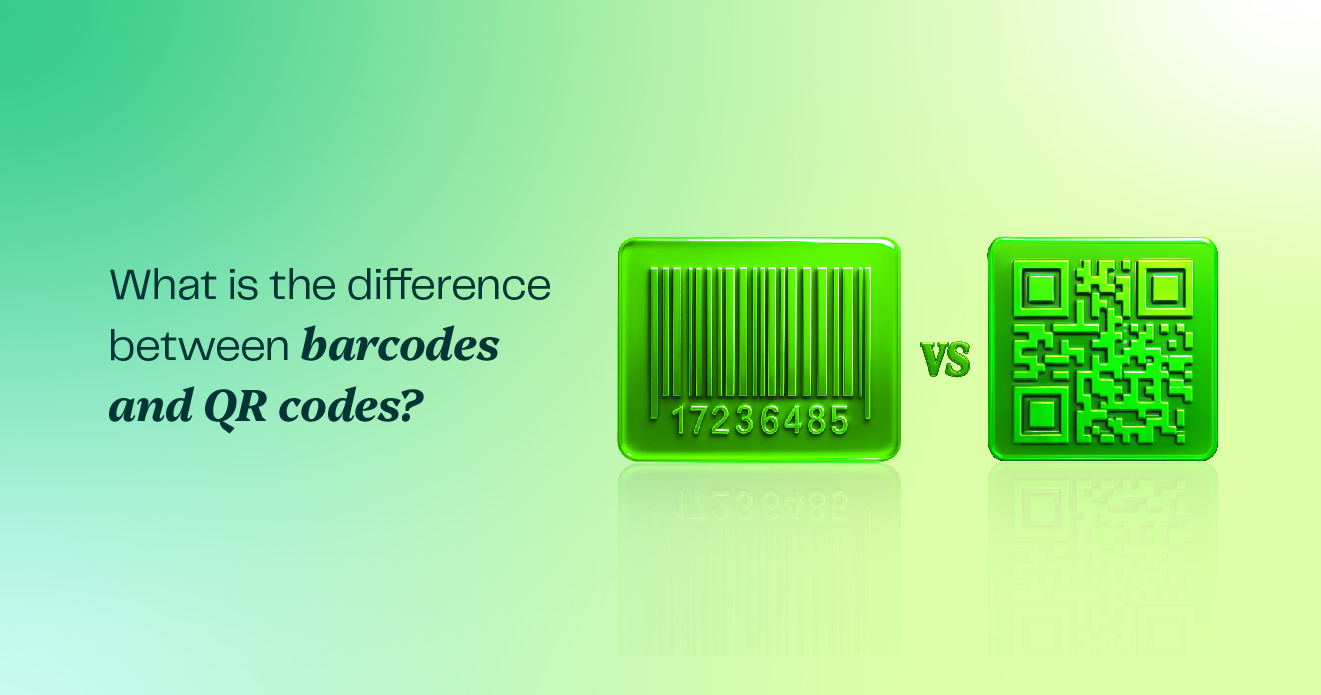Digital transformation has changed the way we pay, shop and interact with brands. Among the most visible changes is the rise of QR codes—a fast, contactless and secure way to share and access information. While both barcodes and QR codes are used to store data, the difference between barcodes and QR codes is about purpose, versatility and ease of use.
In this blog, we explore the practical barcode vs QR code comparison, focusing on real-world use cases. As businesses across India adopt smarter payment methods, Pine Labs offers QR code-based payment solutions. Our PoS systems support both static and dynamic QR codes—enabling seamless customer experiences across retail, F&B, healthcare and more.
Understanding barcodes and their primary applications
A barcode is a one-dimensional (1D) code composed of vertical lines of varying widths and spacing. These patterns encode numeric or alphanumeric data and are typically scanned using laser barcode scanners. The most common application of barcodes lies in retail inventory systems, product labelling, logistics and warehousing.
Barcodes offer speed and accuracy in environments where tracking and managing large inventories is crucial. For example, supermarkets use barcodes at checkout counters to scan products, retrieve prices instantly and update inventory databases in real time. However, the design of barcodes limits their data storage capacity and makes them unsuitable for broader digital applications such as contactless payments or personalised customer experiences.
The differences between barcodes and QR codes become clear when barcodes are compared to newer, more adaptable formats that offer real-time interaction—especially in the payments ecosystem.
The role of QR codes in modern commerce
A QR code, or Quick Response code, is a two-dimensional (2D) matrix barcode that stores data both horizontally and vertically, allowing it to hold more information than a traditional barcode. This makes it particularly valuable in contexts that require dynamic data exchange, such as digital payments, authentication and marketing.
The rise of smartphones has made QR codes incredibly accessible, as most modern devices have built-in scanners via their camera apps. In the context of payments, QR codes offer unmatched versatility. Pine Labs, for instance, enables merchants to accept payments through both static and dynamic QR codes.
- Static QR codes: These remain unchanged and are commonly used by small vendors. The customer enters the amount before paying.
- Dynamic QR codes: These are generated per transaction and are pre-filled with the amount, merchant ID and transaction data, making them faster and more secure.
In the barcode vs QR code comparison, QR codes stand out for their ability to support secure, real-time digital payments. They also enable businesses to offer loyalty rewards, track customer behaviour and integrate marketing features—all within a single scan.
Key differences between barcodes and QR codes: A comparison table
| Feature | Barcode | QR code |
| Structure | One-dimensional (1D) | Two-dimensional (2D) |
| Data capacity | Limited (up to 20–25 characters) | High (up to 7,000+ characters) |
| Scanning technology | Laser scanner | Smartphone camera or QR code scanner |
| Use case | Inventory, labelling, logistics | Payments, marketing, authentication |
| Design | Vertical lines | Square grid with patterns |
| Scanning direction | Unidirectional | Multidirectional |
| Payment capability | Not suitable | Ideal for digital transactions |
| Real-time interaction | No | Yes |
| Device dependency | Requires special scanner | Accessible via mobile phones |
Why businesses prefer QR code payments today
The rapid digitisation of commerce, especially post-pandemic, has accelerated the shift toward contactless and cashless payments. QR codes have emerged as a preferred choice because of their simplicity, flexibility and smartphone accessibility.
Pine Labs’ PoS systems are equipped to support QR code-based payments—across platforms like Google Pay, Paytm and PhonePe—without requiring additional hardware. Businesses of all sizes benefit from:
- Hygienic and contactless: Ideal for healthcare and F&B.
- Seamless checkout: Especially with dynamic QR codes at the PoS.
- Customer convenience: Scan and pay in seconds.
- Real-time settlement tracking: View payment status instantly.
The differences between barcodes and QR codes play a decisive role in payment experiences. While barcodes are static and rigid, QR codes are dynamic, responsive and future-ready.
QR code payments with Pine Labs: Smarter, faster, safer
At Pine Labs, we offer integrated QR code payment support through our advanced PoS systems. Our technology adapts to your business model—whether you need a printed static QR at a stall or dynamic QR codes at your retail counter, our platform delivers.
Merchants can:
- Accept payments from all leading UPI apps.
- Offer a unified checkout experience.
- Generate dynamic QR codes per transaction.
- Track payments and reconcile instantly.
This flexibility transforms how customers interact with your brand. Whether in a café, pharmacy, boutique or multi-store chain, our QR-based payment system simplifies and speeds up every transaction—without needing barcode readers or additional equipment.
Secure, fast, touch-free
The digital age demands more than just speed—it requires adaptability, security and a customer-centric approach. That’s where the differences between barcodes and QR codes become clear. Barcodes remain relevant for inventory management, but QR codes now lead the way in payment innovation and user interaction.
QR codes have emerged as the smarter choice—especially for businesses looking to streamline operations and offer seamless digital transactions. Pine Labs is proud to support this evolution by providing QR-based payment solutions tailored for modern merchants. With our support for both static and dynamic QR codes, businesses can deliver fast, secure and touch-free payment experiences—every single time. Learn more at https://www.pinelabs.com/.

